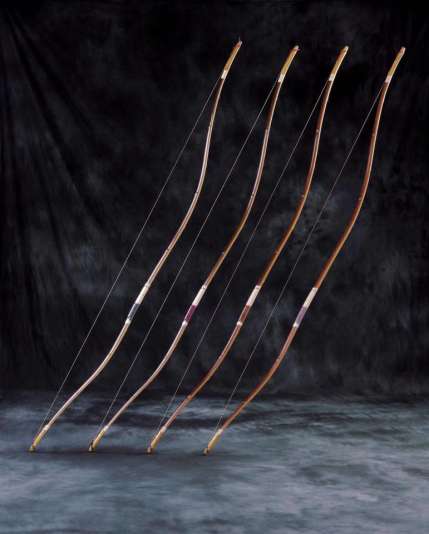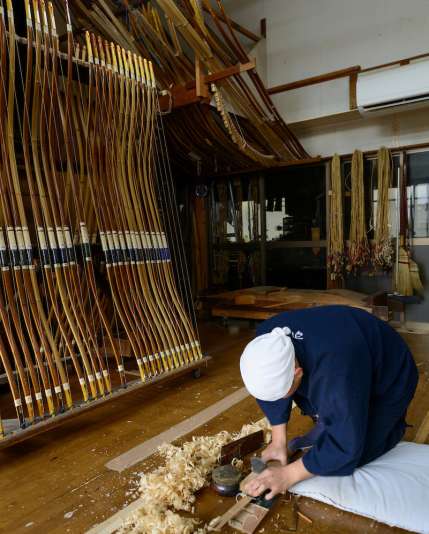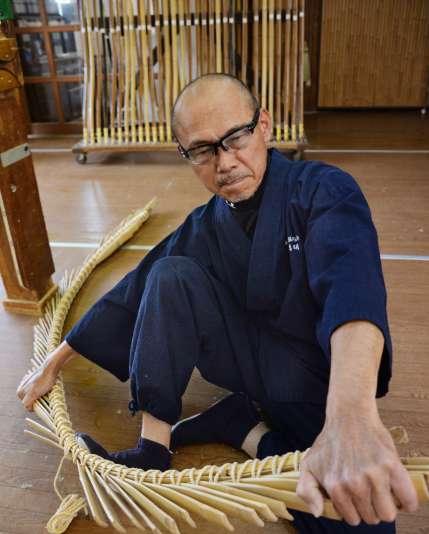
Story
Uncover the Intricacies of Making a Miyakonojo Longbow
Years of Training, the Best Materials and the Right Techniques
By JNTO on 5 July 2022
The city of Miyakonojo in Miyazaki Prefecture enjoys a warm climate and an abundance of nature, which help the city’s cultivation of wax trees and high-quality bamboo that are used for various products.

One of the items fashioned out of these raw materials is the longbow, revered by many archery enthusiasts in Japan. The region also produces 80% of bamboo bows in Japan and holds an annual kyudo (Japanese for archery) competition.
But what exactly makes a Miyakonojo longbow so special?

The exact origins of the Japanese longbow are unclear but documents from the ruling Shimazu clan in the region's early days stated that archery was popular as a martial art pursuit in the 17th century, and that the Shimazu clan generously sponsored weaponry.
The longbow was also the Japanese samurai’s weapon of choice during Japan’s Sengoku period (the age of provincial wars, around the mid-15th – 16th century). During the Meiji period (1868-1912), a famous bowmaker named Yoshiharu Kusumi came to Miyakonojo in search of construction materials for bows and trained many disciples during his stay and encouraged the growth of the local longbow tradition.

A Miyakonojo longbow measures about two metres in height, longer than regular bows and taller than the average human. This length increases the accuracy and power of the bow.
A craftsman wishing to perfect his skills in creating a Miyakonojo longbow usually goes through about 10 years of training before being fully qualified to make one.

On top of its stringent quality checks, there are an estimated 200 steps in creating a Miyakonojo longbow.
The first step is identifying the type of bamboo to use: Madake or Japanese timber bamboo that is three to four years old is selected and combined with wood from Japan wax trees - this combination gives the bow the structure and resilience it needs. This part of the process is crucial because even the slightest dip in the quality of raw materials results in an inferior bow.

The meticulously selected bamboo will then go through the process of cutting, oil removal, drying and heating. The bow’s core is made by layering three to nine strips of bamboo; more layers of bamboo increase the resilience of the bow. Bamboo strips are attached to the core’s front and back, then shaved, starting at the bow’s grip section and following through thinly towards the bow’s ends.

At each end of the bow are the hitaigi (upper-end plate) and sekiita (lower-end plate), which are used for stringing. The core, bamboo strips and two end plates are then assembled to construct the bow.
To create the curves of the bow, wedges are inserted into the outer side of the curve. The bow is then strung, its overall shape adjusted. After the bow is placed on a platform, it is left for about 10 days so its shape could set.
A wood planer and a knife are used to sand the bow as a finishing touch. A grip is attached to the bow’s midsection and the bow’s length is adjusted to suit the archer.

Discover the fascinating creation of Miyakonojo longbows with the help of the Miyakonojo Bow Association, where one can get a glimpse of the entire bow-making process. Take home a little piece of Miyakonojo’s large longbow and kyudo history too through souvenirs!
Japanese Traditional Bow Makers Cooperative Association
Address: 8-14 Tsumagaokacho, Miyakonojo City, Miyazaki 885-0033, Japan
Website: https://www.miyakonojyo-yumi-kumiai.com/ (Japanese only)
Access: From Miyazaki station, take the JR Nippou Line to Miyakonojo station, followed by a 10-minute walk to the association
















































